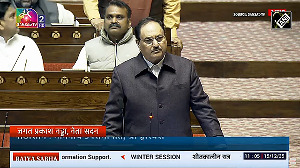One of the implications of rising interest rates that deserves more attention than it gets in the current discourse is that of deteriorating credit quality. As interest rates climb, the pool of borrowers gets riskier.
Economists call this adverse selection and have been writing copiously on this ever since Stiglitz and Weiss ("Credit Rationing in Markets with Imperfect Information") wrote their seminal paper on this phenomenon way back in 1981. Empirical studies in the US and other markets have shown a rising proportion of bad credit in a phase of rising interest rates.
Indian banks face exactly the same problem today as rising deposit costs and tightening monetary levers push them to hike rates. Formal data are hard to come by but most bankers seem aware that the risk of default by borrowers has increased substantially over the last few months. The problem is particularly acute for retail loans, especially unsecured (without collateral) loans like credit card debt, and personal loans.
The intuition behind this is not difficult to fathom if one appreciates the fact that higher returns are associated with higher risk. Take the case of project lending, which is often used to illustrate adverse selection in credit markets. As interest rates climb, the projects that become viable are the ones that offer higher returns. If the association between risk and return does indeed hold, these projects are necessarily those that are riskier.
From a lender's perspective, these are the projects with higher default risk. In the case of retail borrowers, it seems that those who are likely to borrow at higher rates are the ones with riskier income streams. The bottom line is that if credit growth does not come down despite rising rates, we not only run the risk of escalating inflation but also of feeding a credit bubble that might in turn result in escalating bad debt.
I hope this doesn't happen. It is in banks' interest to rein in credit growth in this scenario, especially in segments where default risk is rising exponentially. A number of strategies are open to them. For one, they can simply choose to exit these segments, at least temporarily, and focus monitoring their existing asset book more closely. Alternatively, they can hike rates but become more selective in whom they lend to, and use additional parameters to gauge the creditworthiness of borrowers. Both these strategies entail a decline in credit disbursal.
This seems to have happened to a significant degree in the Indian markets. Category-wise credit data released by the RBI show a sharp dip in the growth rates of credit disbursal, particularly in retail categories like mortgage lending and credit card loans. Credit card loan growth, for instance, has plummeted from about 200 per cent in end June to about 51 per cent at the end of October; mortgage loan growth has dipped from 54 per cent to 32 per cent. (Banks used by the RBI to calculate these are not identical and so the comparison might not be entirely justified. However, they do give a basic idea of the trends.)
The third option open to banks is to keep their lending rates relatively low, take a hit on their interest margins but stave off large-scale default in the process. This last strategy deserves closer attention. With rising default rates on the back of rising interest rates, the profitability of banks has to be perhaps assessed a little differently.
A bank that is pushing lending rates up in line with the rising cost of funds might be able to protect its interest margins in the short term. However, it might end up with a rising pile of bad debt in the medium term. This will in turn hurt its interest earnings. Thus, banks need to focus on expected interest margins-the cost of funds and the difference between interest earnings that factor in the probability of default. Analysts, assessing the earnings prospects of banks, need to follow the same approach.
It is quite likely that for two banks with a similar cost of funds, the one that has a lower lending rate will turn out to be more profitable in the medium term than a bank that lends at a higher rate.
I foresee the following trends in Indian banking over the next few months. Banks are likely to see more bad credit, particularly on retail loans. They will respond to this by vetting their loan proposals far more stringently. Some banks may simply choose to exit some credit categories temporarily. Thus, credit growth will come down even more not just because demand is sensitive to rates but also because of a cut-back in the supply of credit.
Finally, let me quickly put down my view on where I see interest rates headed. Clearly, given the fact that inflation is beating all forecasts, the RBI is unlikely to change its hard-line stance. I notice that the sparring between the central bank and finance ministry on the issue of the ideal interest rate for the economy has stopped.
Mr Chidambaram now fully endorsed Dr Reddy's prescription for the inflation malady and seems concerned less about the negative impact on growth. My reading of the central bank is that given the current rate of headline inflation, it now seems uncomfortable with even a small amount of surplus liquidity in the money markets.
The corollary is that if foreign capital flows continue to seek Indian shores, another dose of monetary tightening seems inevitable. This could either be a hike in the signal rates like the repo rate or another hike in the cash reserve ratio (CRR) to physically drain surplus cash from the money markets. We seem to be some distance away from the peak of the interest rate cycle.
The author is chief economist, ABN Amro. The views here are personal.






